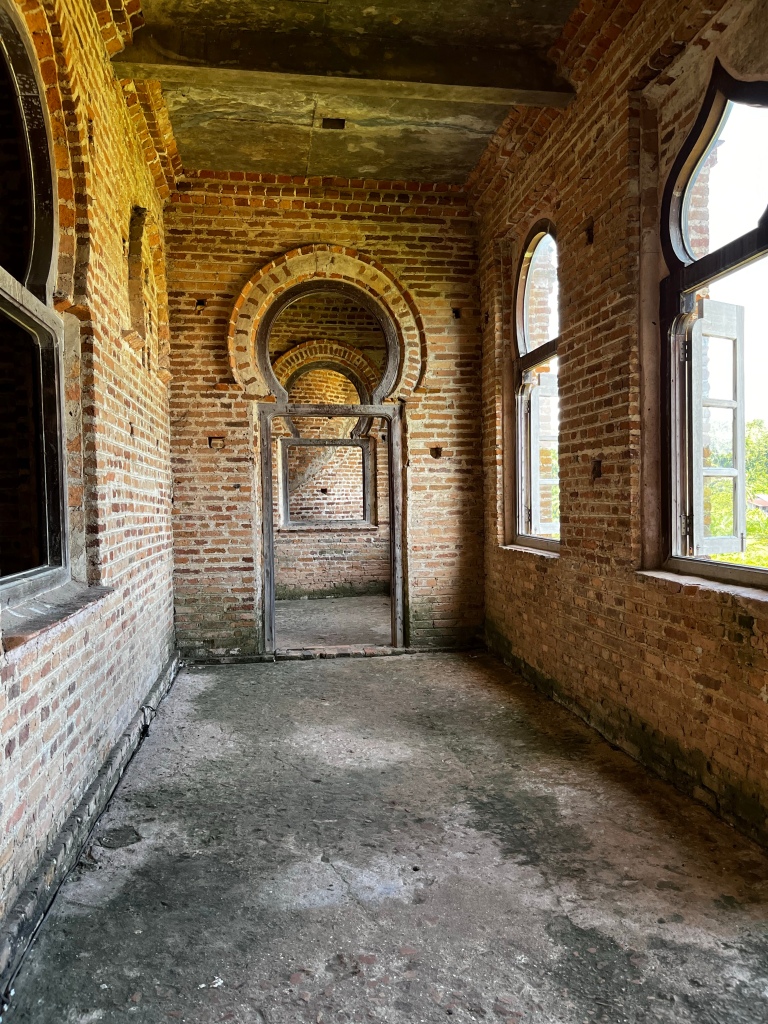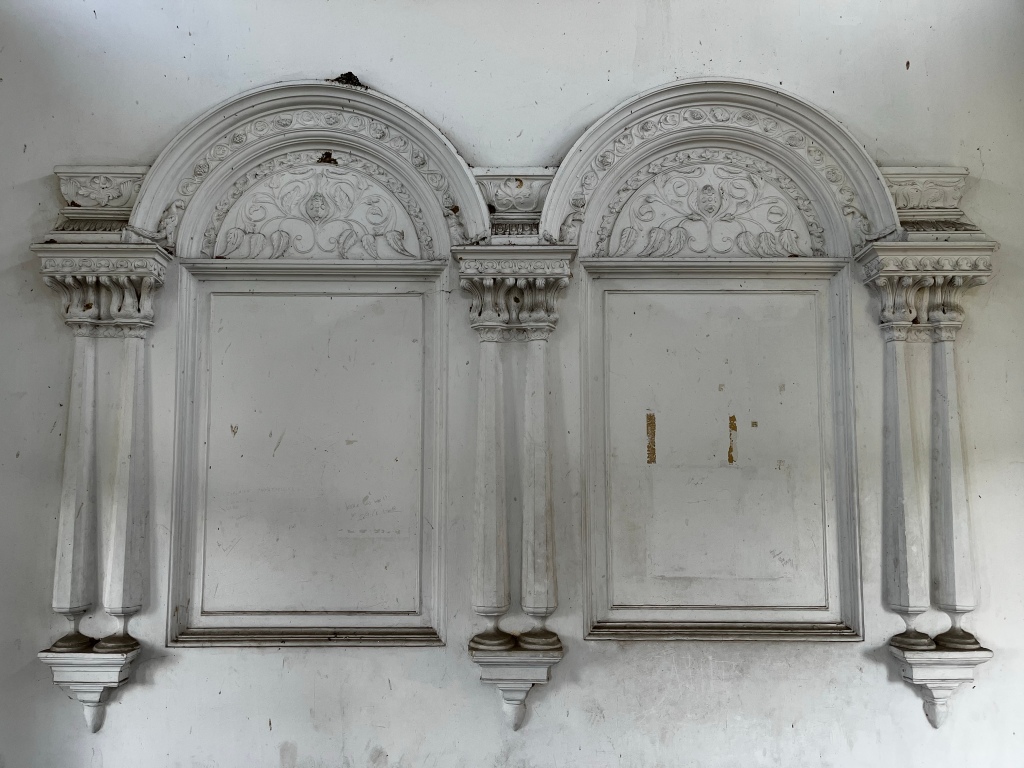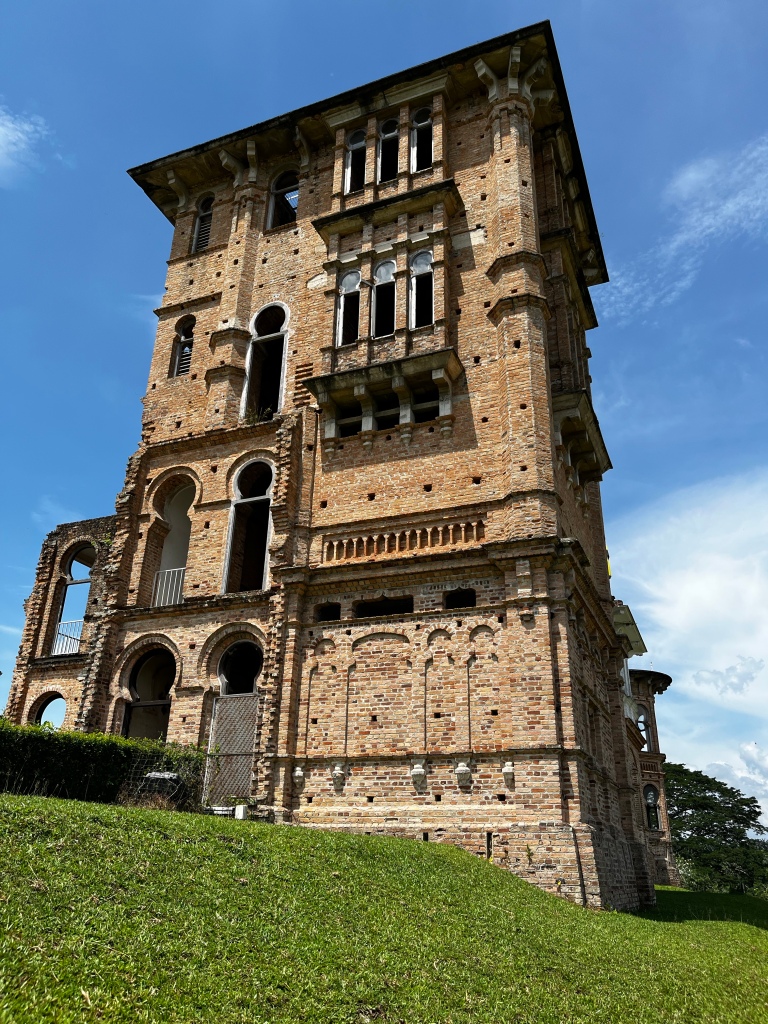Asians are so superstitious about ghosts, they’d go to see a place only for the spooky stories. And Kellie’s Castle in Ipoh ticks all boxes – it’s grandiose structure, the stories of romance and heartbreak, the mystery and of course the ghost stories.

In Malaya, Kellie’s Castle was known as Agnes’ Palace. The Taj Mahal like fairytale has its roots in William Kellie borrowing money from his wife, Agnes – the true owner of the castle – a sum of $300,00 Straits Dollars to buy 1,500 acres of Kellas Estate and surrendering half the holdings in her name.
The highly hierarchical British society and the East India Company that William Kellie dealt with on a daily basis, required dexterous manoeuvring to be a part of the bureaucrats’ inner circle for authorising deeds and deals. Kellie, an ambitious Scotsman, often fell out of favour with these bureaucrats for his ineffective management of projects.
William Kellie was determined to prove the bureaucrats wrong and decided on building a castle that would be grander than the British Residency in Taiping; that would have the first hydraulic lift to take his guests up for rooftop soirées, play tennis at the indoor court and a pool where he would have wanted his children to frolic. It was to be a social playground which Kellie hoped will get him the acceptance he so desperately desired.





The architecture of Kellie’s Castle was heavily influenced by the Indo Saracenic style, which was very much the prevalent style of architecture during WWI. Kellie was fascinated by the Hindu religion and the Indian architecture and combined Mughal arches with Gothic crosses.





With WW1 raging in Europe, the castle’s construction met with some bumps along the way. In 1918, the Spanish Influenza led to the deaths of many of his builders who he had brought from India, causing further delays.
In 1926, Kellie visited England to bring his daughter Helen, son Anthony and his wife Agnes back. He stopped by in Lisbon to finalise the terms of his plantation deal and also pick up the hydraulic lift. However in the hotel, he caught pneumonia and passed away at the age of 56.
Agnes and her children never returned to Malaya. She sold her estate and the castle to Harrisons & Crosfield, a Liverpool-based company trading in tea and coffee. Agnes herself came from a wealthy Liverpool cotton family and had many elite connections.
Harrisons & Crosfield had no intentions to complete the castle and it was left to rot away, consumed by the neighbouring jungle over the decades.


Agnes remained in England, living in luxury close to Harrods until her death. Anthony was killed in WWII. The tragic end to the story has fascinated the locals who have seen apparitions of Kellie in the corridors.










In 2003, when the neighbouring road was widened workers inadvertently unearthed a section of the tunnel. This tunnel may have connected to the nearby Hindu temple which Kellie’s workers had asked him to build following the devastating Spanish Flu.
Two other tunnels were discovered while the whereabouts of the 4th one remains obscure. Some eyewitnesses also recount seeing a black car in one of the tunnels in 1960s.


What a beautiful old building, and such interesting history! I love the mix of architecture types.
LikeLiked by 1 person
Thank you for your comment Anna. I was fascinated by the architecture and the history too. I wish it could be converted into a B&B so the halls can fill up with laughter again. It is a beautiful estate.
LikeLiked by 1 person
A B&B would be a fabulous idea I agree!
LikeLike